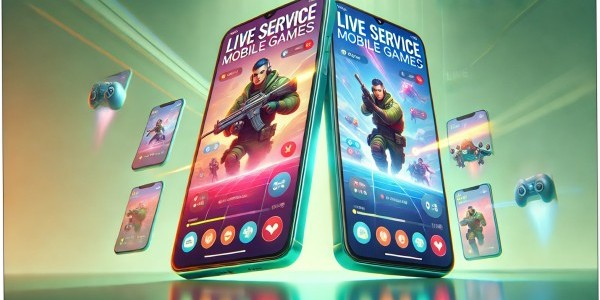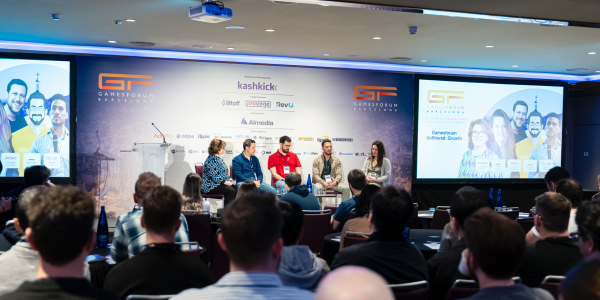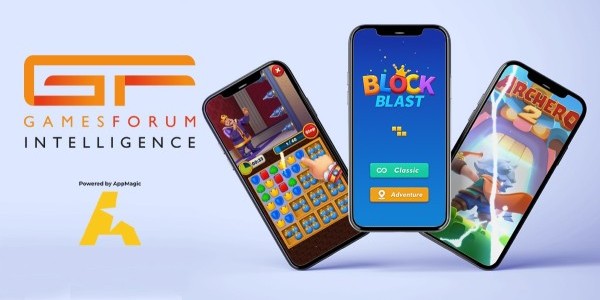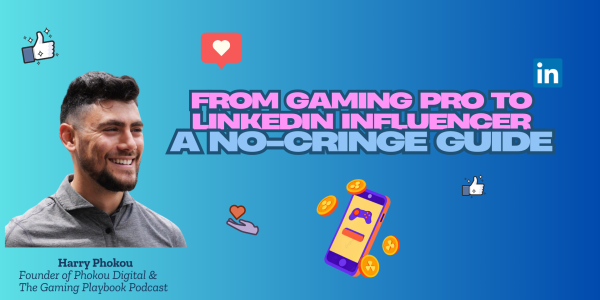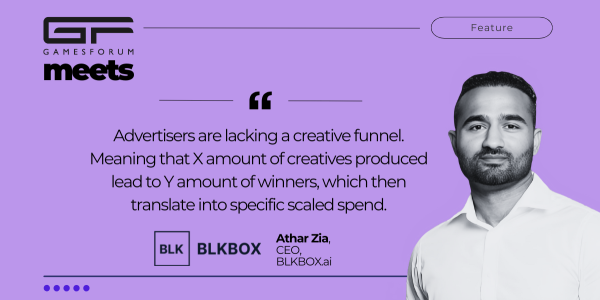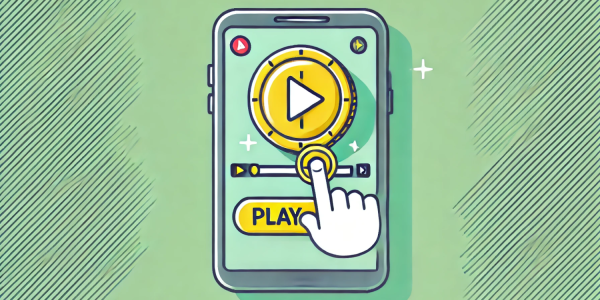“Creative is intelligence having fun:” Why creativity in gaming is more important than manual optimization

This year the mobile industry is shifting from highly segmented user acquisition to a much broader user acquisition due to iOS 14.Triple A campaigns, LAT-on campaigns and other new buzz words have changed the way we are buying on iOS but also reminded us how important the ad creative with broad targeting appeal are to convince a potential user to install our game on his/her device.
The studio of creative magic might become more important than the data lab as data collection begins to be fairly restricted years on years. Creativity is not only a way to grab someone's attention - it is a way to make people think, feel, like, and it is essential to work on it in digital marketing to creative a purchase.
Does creative impact your cost per new user ?
During Covid - a lot of marketers saw that they did not have any control on increasing CPM prices and hard competition; so what does a marketer do in order to optimise the cost per new user during highly competitive time?
| Ad 1 | Ad 2 | Ad 3 | |
| CPI (cost/install) | $15,38 | $12,82 | $7,69 |
| Installs | 2,0 | 2,3 | 3,9 |
| CVR (install/clic) | 5% | 3% | 5% |
| Clicks | 39 | 78 | 78 |
| CTR (clic/impression) | 3,90% | 7,8% | 7,8% |
| ad impression | 1000 | 1000 | 1000 |
| Spend | $30,00 | $30,00 | $30,00 |
Random numbers example
As you can see with the random example above, improving CTR and CVR seem to be a fair answer on what the marketer can work on in order to improve the cost per acquisition.
Indeed, the more segmented your targeting, the better the chance you have to improve your CVR. In contrast, with less segmented targeting - without hyper segmented audiences on iOS14 for instance - to get new users your CTR becomes more important as your CVR decreases. A lot of marketers faced a decrease in CVR since the new norm of broad media buying on iOS came up. CVR is a central metric in ASO and should never be forgotten by paid user acquisition managers as it is the step prior to any install (except for preload).
Once you acknowledge your median CVR is important; you can then work on enhancing your store page but you can also use your median CVR metric to calculate your CTR goal in order to generate the appropriate number of installs. But how to improve your CTR in order to decrease your CPI?
How to produce great content that performs AND improves your CTR?
The user is consuming tons of content on his/her mobile journey on a smartphone that’s providing amazing user experiences; how can your ad stand out and become a real competitive advantage?
- Know your user ; Use store reviews and studies to design creative.
It seems obvious, but you need to know your user and get several user persona in mind while producing content. Even before you design your creative - understanding your player is key. What does your existing player like/dislike that similar new players could like or dislike as well?
A first essential tool everyone has access to is store reviews. No better tool will give you as good an overview as what your users like and dislike about your games but also your competitor’s games. If I take for instance Candy Crush Sagaon Google play store I have some input I have from my users that I can use in advertising:
 Example Game Review for Candy Crush
Example Game Review for Candy Crush
| Pro | Cons |
| This game is fun and easy to follow. |
They make the levels hard so that they'll drain your money |
| This game we can play when we were bored. A good game to.pass the time, | But when reaching upper levels , It is very hard to crack it and finally giving more stress .. |
| Fun. Funny. Fascinating. | This game is ALL about buying boosters. |
| The events are creative | I hate how there are no longer chances for free spins at the end of your turn or chances to earn free boosters. |
Source : Google play Store - Candy Crush Saga
Completing a level seems to be one of the triggers for users to play this game :
"They make the levels hard so that they'll drain your money, But when reaching upper levels , It is very hard to crack it and finally giving more stress …"
Having a look at the adlibrary by Mobile Actionof Candy Crush Saga - you can then see the wording of almost all creative have this ad copy “Can you complete all the moves?” and show winning gameplay that makes you win, unlocking the levels.
 Source : Mobile Action ad library Candy Crush Saga
Source : Mobile Action ad library Candy Crush SagaAnother great tool to get audience insight is Yougov and it can easily provide you fwith early insights. For instance ; if I do this exercise with Epic Games users in US I find out that those users tend to like Rockstar Games (33.1%) and prefer to play games where they can create their own character (25.1%).
When I look into the Facebook ad libraryit is then unsurprising that I see the brand advertising the April new pack allowing users to personalize his/her character with an April exclusive pack.
 Source: Facebook ad library
Source: Facebook ad library2. Know your games ; the audience of core and casual games is different.
If I take the example of Core and Casual gamers, their motivations are different and you need to take that into consideration along with what exactly is your game and what does it provide when you design your next creatives for them
Several studies can help you in your journey to design the appropriate creative in your quest of getting a better understanding of your game and user - two brains are always better than one.
In the last Think with Googlestudy I read - Google triggers the different motivation that make a user play a game depending if the user prefers Core or Casual games. Because at the end of the day - producing creatives is marketing and you need to keep in you’re your understanding of what is your value for people in order to convince new folks to play your games.

|
|
Core | Casual |
| Time per week |
> 7 hours |
< 7 hours |
| Willingness to pay | Yes | No |
Source : Think with Google

According to the study, Core gamers enjoy challenges more than casual gamers who have a higher interest in being relaxed and avoid boredom. This information needs to be tested to impact your creative strategy. Indeed, for Hyper Casual games - 67% of the users play those games to relieve stress in the US according to Facebook and 53% for Passing time between daily activities according to Facebook.
If Casual users want to chill does that mean that they enjoy more to be targeted when they are at work and want to have a little break? When is the best time to target this audience and with which ad? Are they more connected into other games or social media during their break? What would be the best creative way to grab their attention during this time? All needs to be tested!
Having a look at Homa Games ads on Ad library Mobile Action you clearly have an ad, but also a game that gets between daily activities -work, and inspires & relieve stress - with the emoji code.
3. Acknowledge creativity is the new user acquisition; face it and build your team around it.
Stepping outside of your desk and meeting people to brainstorm is hard - and not only because we’ve been working from home for a year, but also because you need safe space to make the magic happen and be allowed to fail.
“Innovation comes from a lot of failure “ says Jayne Peressini in this podcastby REMERGE.
Creativity is not a skill that only belongs only to designers anymore. Let’s face It - with the automation of all advertising platforms - creativity is the skill of the future. User acquisition managers should not regret the time of daily manual optimisation and repetitive jobs and need to embrace creativity ! When you have a closer look at the creative iteration process, the new trend of user acquisition - this is clearly design thinking methods that are used for user acquisition. Thus, your role is now to empathize, define, ideate, prototype and test.
Some tips to make creativity happens in your teams:
- Empower employees who take risk and create a psychological safe space.
- Empower creativity with free time; employees using 20% of their free time to work on their personal project free their mind and grow their creativity.
- Reward and encourage creativity; we all like to be valued at work and creativity deserves recognition.
- Do creative Hackathon; It is a fun way to get new ideas together.
Define clearly your creative goal and priority in time. Each creative task needs to be or not prioritize and needs time - you do not ask a designer to produce a creative in 2 days if you want something qualitative. As we do not need 30 new concepts per month, we sometimes need only one iteration for all channels to test it properly during the month. So far creative in user acquisition can be divided as below :
- Basic editing ( edit a creative for different platform)
- Advanced editing ( creative refresh, creative iteration )
- New creative ( New creative, animation, CGI)
As UX managers are designing studies and workshops to enhance the product UI of a product with users feedback; UA managers are designing creative testing strategies to acquire knowledge by channel and platform of each creative in order to understand users and decrease the cost per acquisition. In short - the duty of the user acquisition manager - if he/she accepts it- is to once the creative is provided understand and be able to explain why, where and how a creative IS or IS NOT working - both are important.
4. Organize a unified creative testing taskforce in teams; creative testing tips:
Sometimes less is more and sometimes more is less. You know each channel has different creative standards and you might produce creatives only for Facebook or only for twitter. This makes your creative team create two different concepts that you will not have the opportunity to test on all channels. Don’t you feel you may miss opportunities by avoiding one concept to be produced for all channels? Isn’t the purpose of testing to challenge what you think will fail or not in order to find a new performing concept?
In your adset level - you usually have at minimum one winning creative, one challenger and one neutral creative. Of course, I am not saying that if your winning creative is amazing you should not iterate on it or create ads based on your channel UI and mindset- but don’t you think this iteration can also maybe make this creative scale on other channels and unify your creative advertising to enhance installs and help user to recognize you?
Below you will find how to organise as a team your unified creative testing taskforce in order to make more noise across channel with one concept tested same time in all platform:
- Define with data science what is the impression significance per channel. Below an example by Splitmetric :
- Define your monthly creative test budget across all channels - this budget ratio needs to be <85% of your main budget in order to test peacefully ! It is a matter of numbers - if you test with a wise budget allocation you can almost test anything without having a strong impact on your performances and it can only bring value.

- Harmonize your testing strategy in team and schedule test in ALL channels on a monthly basis with your team - a creative can fail on Facebook and win on Snapchat and opposite ; that’s why it worth to test and organise It.

Source : Spreadsheet creative testing review dashboard example
- Test same creative, same time across channels. If all channels test at the same time the same creative on the same market; it will help you to make your creative a success and make brand awareness value from your test as well. As we know users usually see creative in different touch points prior to installing your games.

Source : Datastudio creative testing review dashboard example
- Make the testing metrics for success universal - prior to the test be clear on expectation with your teams and define the success metrics.
A common way of testing is by using the AB split test graphical Bayesian calculator:

- Keep the feedback simple - you have your data in your ad platform or BI tool ; if you want to make it useful; it needs to be understood by everyone in the company. Your job is to make things understandable. Words are universal, write your feedback; what you think made the creative a success can be different to what another UA Manager or designer thinks. Your view matters, is precious and helps to gather ideas.

Source : Datastudio creative testing review dashboard example
- Automate the process and review together on a monthly basis in the dashboard and brainstorm on the next month testing plan based on results, product updates and creative ideas!
To conclude, when your ad is displayed - the user gets two choices ; watch it or leave it. When a user watches your ad - it is the first impression ; you want the impression to be good and to grab his/her attention. To reach this stage, you need to work as a team to make your ads but also your brand more powerful and immersive!
Team work = dream work!
By Claire Rozain, UA Manager, Product Madness
Learn more about Creative Optimization post IDFA in the latest Gamesforum Online Webinar
If you'd like to read more by Claire Rozain, check out her blog Digital Growth Hacking Trip

